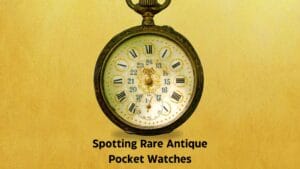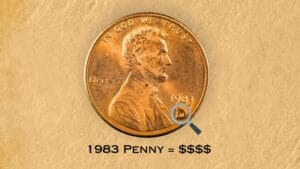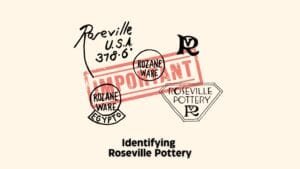If you’re into collecting old artifacts that reflect the craftsmanship of our ancestors, old horse bits should top your list! Now, over the years, the way horses were controlled changed a lot. This gives various horse bit styles, materials, and mechanisms.
It’s these factors that decide the price of a vintage bit in the collectors’ market. In this guide, you will find all the answers related to antique horse bit identification and pricing. So, let’s jump into it!
Takeaways
- Vintage hand-forged iron and bronze horse bits hold the most value in today’s antique market.
- Look for old bits with hand-carved intricate brass, silver, or gold engravings as they can fetch really good returns.
- Try to spot the brand stamp or logo to track its age and appraise the model rightly. Usually, you can find the logo on the shank, bridle, and headstall rings.
- If your bit is very rusty, you can clean it to make sure the engraving is visible. The ornate design can hike the price.
How to Spot a Real Antique Horse Bit?

Before we get into identifying antique horse bits, what really is a horse bit?
Well, a horse bit comprises components like cheek pads, mullen, shanks, and rings, which are used to control a horse’s mouth via reins and bridles. It’s a combination of different units, with its main part fitting inside the horse’s mouth.
Now, when we talk about vintage bits, you can expect functional designs with rings and shanks, and intricate carvings. You can also look for brand stamps for proper verification. And finally, try to spot these features:
- A brown patina or rust on the surface
- Unpolished, hand-forged simple designs
- Made of bronze, brass, or iron
- Hand-carved ornate engravings on the shanks, cheekpads, or headstalls
- 5 to 6 inches long mouthpieces
A Quick Sneak Peek Into the History of Antique Horse Bits
After ancient people realized the need to use a tool to control their horses, the first bits showed up during ancient civilization. These were mainly made of rope, bone, horn, or hardwood. Although sturdy, these bits were difficult to control.
Then came the metal horse bits in around 1200 BC, which made controlling and handling a bit easier. The first metal horse bits were mostly made of bronze, but later, makers introduced iron. The sophisticated designs of these bits made them more usable.
During the Renaissance and Baroque periods, the horse bits were well-ornated with designs reflecting art and culture. And with time, more handy and controllable styles came into existence for specific activities, like hunting, riding, cavalry, and more.
Moving forward, nickel horse bits became quite popular until the mid-20th century. And then stainless steel became a popular metal for bits replacing all other options, making them rare and expensive today!
7 Types of Vintage Horse Bits and Their Base Prices
Clearly, horse bits underwent huge changes over the centuries. So, today we have different types of antique horse bits that have different significance in the collectors’ world!
1. Snaffle Bits

These horse bits feature a simple design with a single-jointed mouthpiece connected to bit rings. You can find these with twisted, chainsaw, mullen bits, and other mouthpiece styles, as well as different ring types. Old but simple, you can price snaffle or eggbutt bits at around $10 – $50.
2. Curb Bits
Curb bits is a lever-action bit that features a solid mouthpiece mounted to a shank on either side. This shank extends from the mouthpiece to the rein attachment and has rings on both ends.
You can also see a high port in the center of the mouthpiece of these bits. Antique curb bits cost up to $180.
3. Pelham Bits
Pelham bit is actually a sub-type of the curb bit. These have two sets of bridle rings in the bit, a larger set where the mouthpiece meets the shanks and another at the end of the shanks.
You can also find a jointed mouthpiece in Pelham bit, apart from a port or mullen mouthpiece. Generally, old pelham bits are priced around $20 – $50. But with unique ornate models, you can raise the cost to $80 – $100.
4. Weymouth Bits

This is a double bridle curb bit, with one snaffle bit and one curb bit with shanks. You will also spot a curb chain across the mouthpiece. Generally, these bits cost around $40 – $90, but if you spot rare models with copper rollers, you can price it up to $200.
5. Gag Bits
These bits consist of a jointed mouthpiece with rings that slide through holes in the bit’s cheeks. You can find gag bits in different styles like Dutch and Gag Snaffle, generally costing around $20 – $170.
6. Mullet Mouth Bits
These horse bits are known for their simple design with a slightly curved mouthpiece without any port or joint. Old iron or bronze mullen bits with a brand stamp or logo can be worth as much as $200, while regular mullen bits cost around $25 – $100.
7. Kimberwick Bits
You can spot these horse bits with their unique huge D-shaped rings on either side of the mouthpiece, a heavy curb chain, and shanks that use one rein. Since these are newer bits made of mostly nickel or steel, they may cost less, around $10 – $50.
5 Important Factors to Appraise Antique Horse Bits Rightly
Now let’s examine other crucial factors that will further help you identify and value your old horse bits!
1. Horse Bit Age

One thing is clear; the earliest bone, rope, or horn-made horse bits are likely impossible to find today. That means that the oldest accessible vintage horse bits are the bronze and hand-wrought iron ones from the late 17th or 18th century.
You can find more specific and functional metal antique bits from the 19th century. But if you’re looking at nickel or stainless steel bits, it’s probably a new model from the later 20th century, which may not be worth a lot.
Are you confused? Don’t worry! Take these cues to check your bit’s age:
The 1600s Horse Bits
The 1600s horse bits were mainly handmade with brass and bronze. You can spot these with their rough surface and uneven rings, mouthpieces, and cheekpieces. These ancient horse bits can cost you around $50 – $80.
The 1700s Horse Bits
This era brought more functional bits. Also, you’ll see hand-wrought iron bits from this era, which can fetch you over $200. Some rare bits also feature intricate embellishments with different types of expensive metals, like gold and silver, which are really valuable today.
The 1800s Horse Bits
The 1800s horse bits were mostly made of iron, nickel, and stainless steel. Single-rein bits were also popular back then. You can find some rare Military and Cavalry bits from this period, which can cost up to $190- $200; the common bits can cost you around $20 – $150.
If your horse bit has an even polished surface with minimal scuffs and scratches, it may be a newer model.
2. Old Horse Bit Materials
Of course, a horse bit material can tell a lot about its age, but it also impacts its price. As the steel or nickel bits have become quite common, vintage iron, brass, and bronze horse bits attract most collectors and are worth up to $300 – $500.
Check out this table below to understand how the bit material affects its cost:
| Horse Bit Materials | Estimated Value (Basic Models) |
| Bronze | $100 – $350 |
| Silver Engraved | $150 – $400 |
| Gold Engraved | Over $500 (very rare) |
| Iron | $50 – $300 |
| Nickel | $60 – $100 |
| Steel (Stainless) | $30 – $70 (Engraved and rare models can go up to $500) |
The newer late 20th-century steel horse bits are newer and won’t cost more than $20 – $30.
3. Renowned Old Horse Bit Brands
A stamped logo or engraved brand name can make your item even more valuable! So, check your bits’ cheek pads, mouth bits, shanks, bridles, and headstall rings. If you spot any logo, brand name, or letter embossment, you can hike the price of your bit.
If your horse bit turns out to be a branded one, for instance, an August Buermann bit, it can fetch up to $500 or even more.
Below is a quick guide referencing some popular old horse bit brands and their base costs:
| Old Horse Bit Brands | Years | Key Features | Estimated Price |
| Crockett Bit and Spur Company | 1920-1984 | “Crockett” & ST stamp | $100 – $500 |
| North and Judd | 1850-1950 | Anchor mark on shanks | $100 – $450 (Up to $900 for rare bits) |
| August Buermann | 1859-1930 | Silver inlays, “AB” or “A. Buermann” stamped logo | $100 – $600 |
| McChesney Bit and Spur Company | 1912-1946 | “McChesney” stamped logo or an interlocking “M” and “C” logo | $90 – $400 |
4. The Rarity of Vintage Bits
If you come across a rare or limited-edition antique horse bit, it can make you real rich. So, look for rare logos, engravings, or materials to raise the price of your bit. Old Military bits are also considered quite precious.
Here are some rare horse bits models you can check out:
| Rare Antique Horse Bits | Estimated Price |
| 1880s Vintage North & Judd Bit (10569) | $900 – $1000 |
| Crockett Renalde Silver Overlay Engraved Bit (10576) | $600 – $700 |
| Roman Horse Snaffle Bit – 2nd Century AD (771) | $350 – $400 |
| Engraved Silver Inlay Steel Horse Bit Custom By Les Vogt Performax | $450 – $500 |
| Draft Horse Rope Bit Harness Horse Antique Harness Rodeo 10570 | $400 – $450 |
5. Old Horse Bit Conditions
The older the antique item, the more precious it gets. This is equally true for vintage horse bits as well, provided they are not missing any parts and are still functional.
Furthermore, you can look for a dark brown patina and wear signs like scuffs, scratches, and dents to appraise your model accordingly.
What are the oldest horse bits?
Historically, the oldest horse bits are from around 1000 BC, and these were made of natural materials like bone, rope, sinew, wood, horn, and rawhide. But the oldest bits from the 1500 BC – 1400 BC era were simple bits made of bronze.
How to clean a rusty horse bit?
First, soak your rusty bit in a weak acid (or lemon juice or vinegar) for about 48 hours and then wash it. Next, soak it in warm water for a few hours and scrub it with a brush. Then wash the bit with detergent and rinse it. You can also polish the shanks and cheekpads, but avoid polishing the mouthpiece as it may be harmful to the horse.
What to do with old horse bits?
If your old horse bits are years old, you can definitely make good money with it. You just have to identify the antique features, its type, style, material, and its brand. And then you can put it out on the auction.
Horse bits from the ancient era can be a great addition to your antique collection. Just grab your old bit and go through each step mentioned in this identification guide. And there, you’ll have a complete idea about the pricing of your vintage horse bit.
If you’re struggling to find the identification and pricing factors of more vintage tools, like old ‘pliers’ or ‘shovels,’ we’re here to help you!
Note: This article is intended for informational, educational, and entertainment purposes only. Some images are illustrative and may not represent actual brands, products, or related entities. All trademarks, product names, brand logos, packaging, and other intellectual property referenced remain the exclusive property of their respective owners. Any brand mentions or references are provided solely for descriptive and educational context and do not imply any formal or commercial association.










